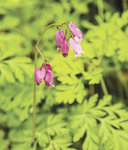
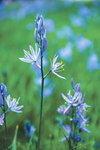
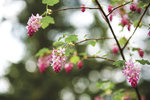
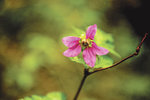
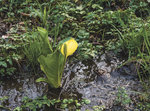
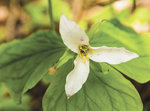
A typical neighborhood in Washington has more than 25 species of birds and mammals. Robins, squirrels and songbirds are so familiar to us, we hardly think of them as wildlife. Hawks can be seen spiraling overhead, and raccoons and foxes frequent some Washington neighborhoods.
Suzi Cloutier is a wildlife biologist and a technician for the Portland-based Backyard Habitat Program, which helps homeowners create habitat for wildlife in their own backyard. Because 40 percent of developed urban spaces are private yards, she says, an urban or suburban backyard offers an opportunity to make a huge impact in available wildlife habitat.
“Nature occurs in cracks in the sidewalk,” says Cloutier. “We can’t avoid it, we want to enhance it.”
Using native plants in landscapes makes a big difference, Cloutier says, because wildlife can utilize native plants up to 90 percent, while non-native species are only utilized by wildlife at 3-4 percent. This means that native plants provide more of the things that wildlife need – food, water, shelter, and space. Butterflies and moths lay their eggs in wildflower patches, and small mammals burrow into the undergrowth.
To create a thriving space for wildlife in your own backyard, start by thinking about food for wildlife. Native flowers, shrubs and trees provide the foliage, nectar, pollen, berries, seeds and nuts that many species of wildlife need.
Wildlife needs clean water for drinking, bathing and reproduction. Water sources in your yard might include bird baths, puddling areas, pond features, or rain gardens. If your community allows it, Cloutier suggests, disconnect your gutter downspouts and route rainwater into dry ponds or catchment areas, where water can filter slowly through the soil and replenish natural aquifers.
Native vegetation is a perfect shelter for wildlife from the weather and predators. Try to provide at least two areas of shelter, which might include a wooded area, ground cover, a rock wall, dense shrubs, or even that water garden or pond.
Cloutier suggests thinking about planting in “layers,” with tall and short trees, tall and short shrubs, and ground covers. Also incorporate plants in masses, or groups, rather than just one of each type. Wildlife which co-exists with a plant needs a group of the same thing.
Wildlife needs a space to exist and to raise their young. Wildlife habitat offers space for the entire life-cycle of a species to occur, from tadpole to frog, and from caterpillar to butterfly. Provide places for wildlife to reproduce, bear and raise their young, safe from predators, bad weather and human intervention.
Organic cultivation methods support the health of wildlife, since pesticides and herbicides kill the insects which form the base layer of food for all animals. In fact, 96 percent of terrestrial birds rear their young on insects, according to Cloutier.
To establish native plants in your garden, start by removing non-native and aggressive species of weeds, such as holly, blackberry and ivy. Such weeds will crowd out a diverse natural selection of plants.
The beauty of native plants, says Cloutier, is that you can be a lazy gardener. Native plants are built for this climate, and when situated in the right place, they will do well on their own, without irrigation, weeding or fertilizer. “It’s not an all or nothing plan,” she says. “You can mix natives and non-natives. Think more about what you are adding, than about taking away.”